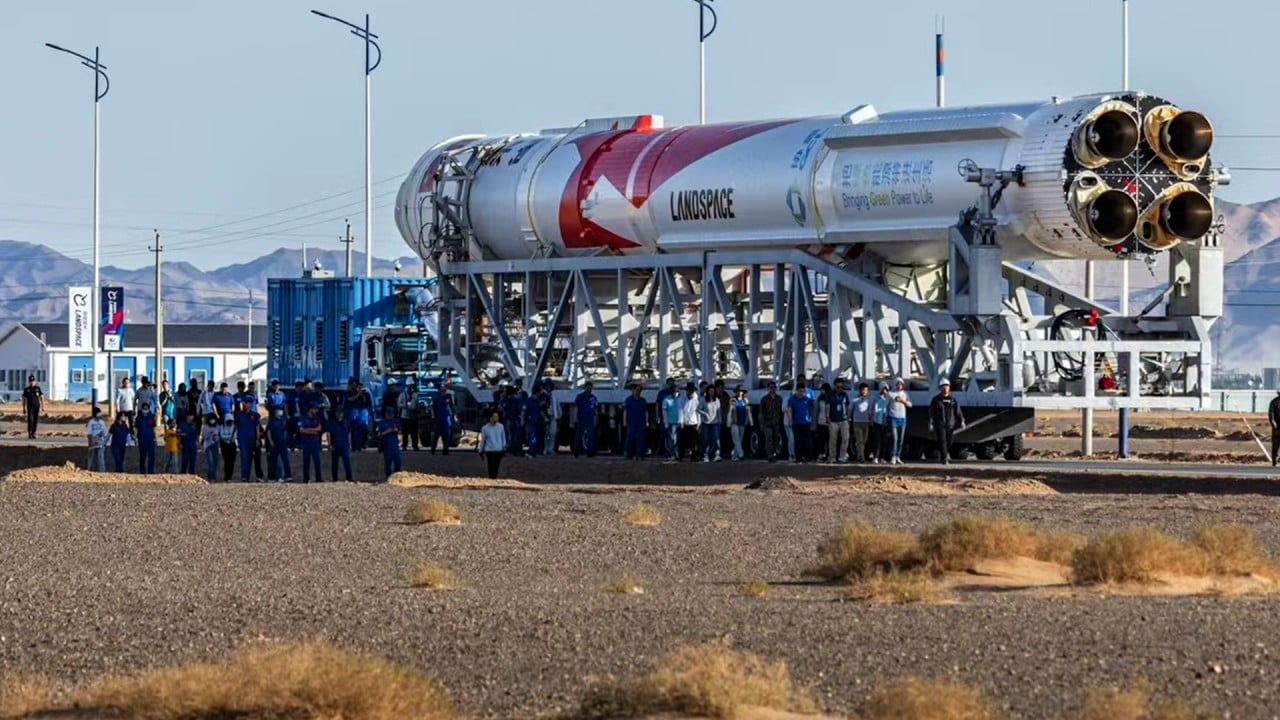China plans second megaconstellation, G60 Starlink with 12,000 satellites, to rival American SpaceX programme

[ad_1]
G60 Starlink, which is backed by the Shanghai municipal government, will eventually comprise more than 12,000 satellites in low earth orbit.
Last month, a delegation led by Cheng Xiangmin, party secretary of Shanghai’s Songjiang district, inspected a new centre in western Shanghai that was dedicated to the massive production of G60 satellites, according to the district’s official website.
They also met representatives of the project’s industrial partners, including Shanghai Alliance Investment and Shanghai Spacecom Satellite Technology, to learn about their progress, the website said.
“Paying close attention to the construction goals and timeline of the G60 Starlink project, we have worked hard to roll out investment and help boost technology transfer in the sector,” a representative from Shanghai Alliance Investment said.
All parties agreed to work together to address key problems and speed up the project, according to the website.
Will rocket failure delay roll-out of China’s satellite network missions?
Will rocket failure delay roll-out of China’s satellite network missions?
In July, Cheng told a press conference that experimental satellites had been launched and connected in space, and nearly 1,300 satellites would be placed into orbit for the initial phase of the project.
The project is part of the G60 Science and Technology Innovation Corridor initiative proposed by the Songjiang government in 2016 to deploy technology innovation enterprises and advanced manufacturing industries along the G60 expressway, which connects Shanghai and the southwestern city of Kunming more than 2,360km (1,470 miles) away.
The technical details and timeline of the project are not known. It is also unclear how China, while lacking a powerful, reusable rocket such as SpaceX’s Falcon 9, plans to send an enormous number of satellites into orbit in a cost-efficient way.
SpaceX’s dominance in space-based internet service hinges on it being the only company in the world that can launch satellites reliably and consistently at the scale needed for building a megaconstellation in low Earth orbit, according to observers.
Musk ‘stopped Ukraine from wiping out Russian fleet by denying Starlink access’
Musk ‘stopped Ukraine from wiping out Russian fleet by denying Starlink access’
Since 2018, SpaceX has used 109 launch missions to put more than 4,800 Starlink satellites into orbit. This month, the company announced 2 million active customers from more than 60 countries for its space-based internet broadband service.
Starlink rivals include OneWeb, the world’s second largest satellite internet service provider with more than 600 satellites in orbit, and Blue Origin’s Project Kuiper, as well as the European Union’s IRIS² constellation.
[ad_2]
Source link







